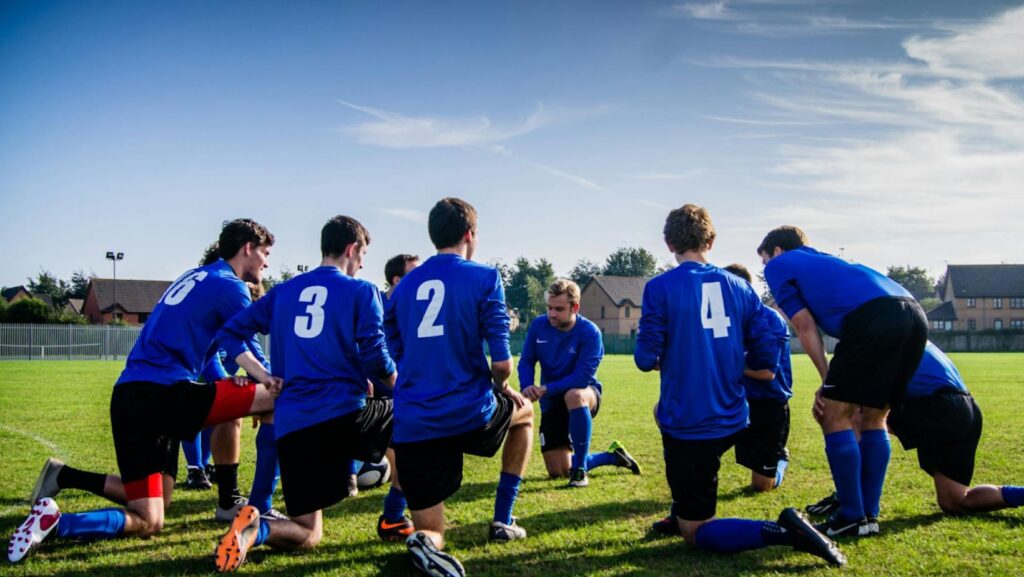Professional sports have ongoing challenges related to injuries. For a team, everything changes when important players fall victim. Strategies must be changed by coaches. Other players must assume other responsibilities. Team morale might change significantly.
Though they appear like basic updates, injury reports can point to significant changes in team performance. The several ways injuries affect team dynamics and team responses to these difficulties are investigated in this paper.
The Importance of Timely Information Sharing
Teams who want to make appropriate adjustments must have reliable knowledge of player ailments. Quick receipt of injury information by coaches allows them to begin developing alternate plans. Many follow updates through sports news sources and specific apps since fans also want to know about player status. Current injury updates offered by the 1xbet app enable spectators to better grasp possible game effects.
Teams with good information management will be more quickly able to respond to injuries. Clear injury communication enables everyone—from management to players to supporters—to be ready for changes. Teams may make bad decisions depending on inadequate knowledge about player availability without effective information exchange.
Psychological Impact on Team Members
When injury reports surface regarding significant players, the team’s emotional state shifts. To close the difference, other players could feel under pressure to perform better. Some sportsmen view injuries to colleagues as opportunities for personal development. For some, witnessing a teammate suffer causes anxiety and tension. Team leaders become especially crucial at these times since they help to keep everyone motivated and cheerful.
Closest friends of injured colleagues may find it difficult to focus. Often working extra during injury seasons, the team’s mental health crew supports injured players as well as those who have to adjust to new positions. All things considered, injuries have psychological consequences much beyond the injured athlete.
Tactical Adjustments Following Major Injuries
Coaches have to quickly modify their strategies upon learning of player ailments. Depending on who is accessible, other forms or playing techniques could become required. Teams with significant depth can adjust more quickly than those mostly depending on star athletes. Once injury reports come in, opponents will likewise change their strategies, usually focusing on areas where the team is suddenly weaker. If substitute players have less expertise, coaches could have to simplify tactics.
The focus of practice sessions shifts to assist recent hires in getting ready for more playing time. The most effective teams allow for seamless transitions by having backup plans available for injury events. From one game to the next, these tactical adjustments could totally affect a team’s performance.
Media Coverage and Public Perception
Public view of teams changes depending on how the injury news is reported in the media. Some coaches purposefully give opponents confusing injury information. Sports reporters specialise in examining how injuries might affect the next events. Sometimes with false information, social media distributes injury news faster than it has ever done. When official injury facts are few, fan communities brim with conjecture.
Teams that seem to hurry athletes from injuries can come under public scrutiny. Media training enables athletes to answer appropriately when asked about ailments of colleagues. Depending on how injury issues are handled and reported, the story around a club could totally shift. Public impression affects team morale, which presents still another difficulty during injury seasons.
Career Development Opportunities Through Injuries
Although injuries present difficulties, they also present opportunities for personal growth. Backup players acquire important playing time not otherwise possible. Many times, young talent results from injuries forcing coaches to explore alternative choices. Those that perform well throughout these chances might be permanently changed into different roles. When staff members have to adjust to unforeseen circumstances, they pick up fresh talents.

Sometimes as athletes learn to collaborate with varied combinations, team chemistry gets better. The company as a whole chooses crisis management skills. Even damaged athletes can grow in fresh directions and learn about the game from several angles while they heal. Many great careers started with chances presented by sad injuries to colleagues.
Long-term Strategic Planning Around Injury Patterns
Good long-term judgements are made by smart teams analysing injury trends. Often, draft choices and player moves take injury history very much into account. Training approaches vary depending on statistics about typical team injuries. Load management techniques arise to stop future injuries under hectic schedules. Medical technology is the investment made by teams to improve prediction and prevention of injury issues.
Programs for player development feature specific injury prevention instruction. Roster building gives more and more depth at positions with high injury rates as the first priority. Effective companies build cultures that combine informed injury risk management with competitive motivation. These calculated moves enable teams to keep constant performance in the face of unavoidable injury risks.



More Stories
What is Cloud Security? Key Concepts and Technologies
From Gold Rush to Bitcoin Rush: What History Teaches Us About Modern Investments
5 Tips to Secure a Forex Funded Account Faster